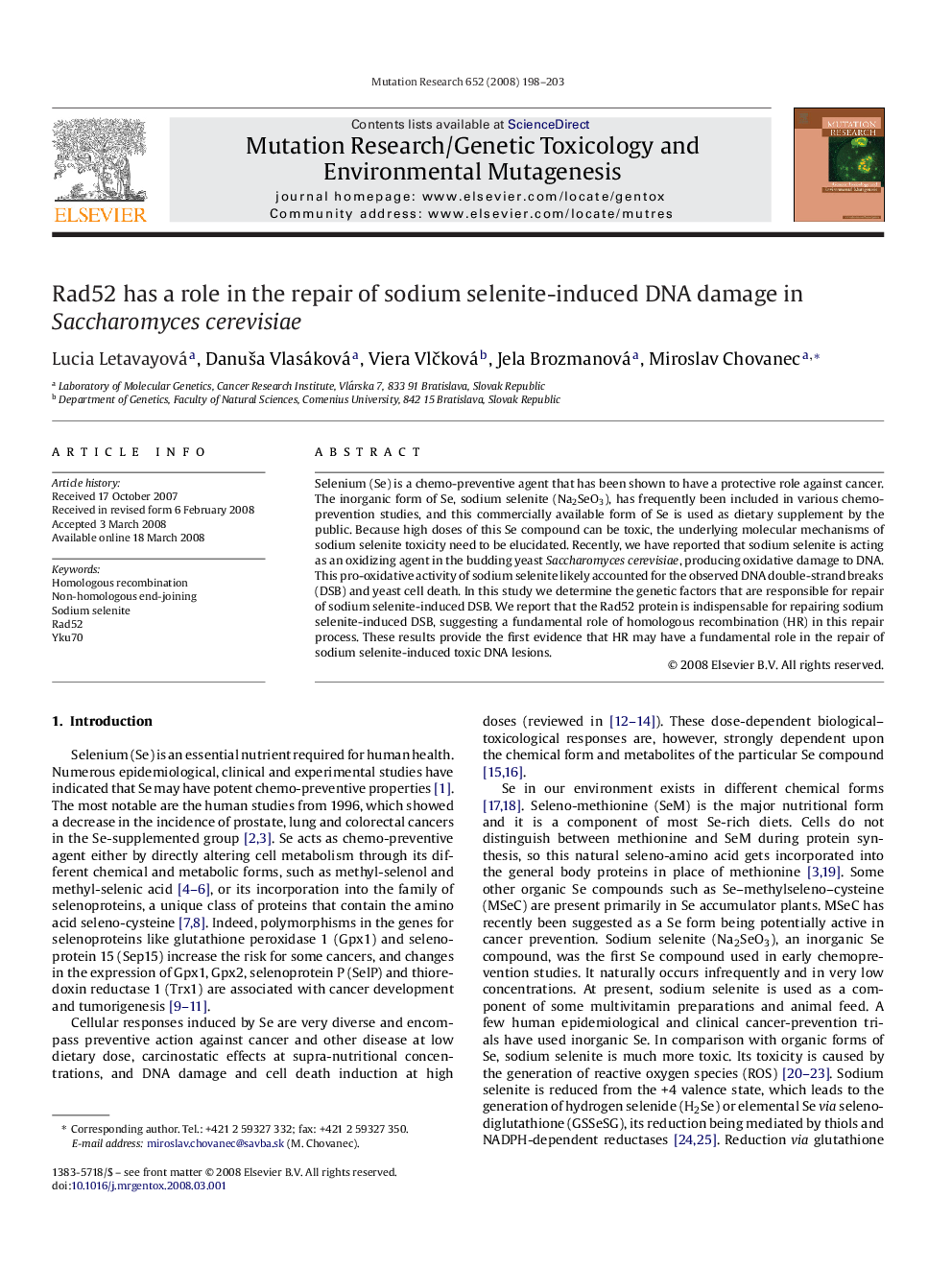| Article ID | Journal | Published Year | Pages | File Type |
|---|---|---|---|---|
| 2148944 | Mutation Research/Genetic Toxicology and Environmental Mutagenesis | 2008 | 6 Pages |
Selenium (Se) is a chemo-preventive agent that has been shown to have a protective role against cancer. The inorganic form of Se, sodium selenite (Na2SeO3), has frequently been included in various chemo-prevention studies, and this commercially available form of Se is used as dietary supplement by the public. Because high doses of this Se compound can be toxic, the underlying molecular mechanisms of sodium selenite toxicity need to be elucidated. Recently, we have reported that sodium selenite is acting as an oxidizing agent in the budding yeast Saccharomyces cerevisiae, producing oxidative damage to DNA. This pro-oxidative activity of sodium selenite likely accounted for the observed DNA double-strand breaks (DSB) and yeast cell death. In this study we determine the genetic factors that are responsible for repair of sodium selenite-induced DSB. We report that the Rad52 protein is indispensable for repairing sodium selenite-induced DSB, suggesting a fundamental role of homologous recombination (HR) in this repair process. These results provide the first evidence that HR may have a fundamental role in the repair of sodium selenite-induced toxic DNA lesions.
